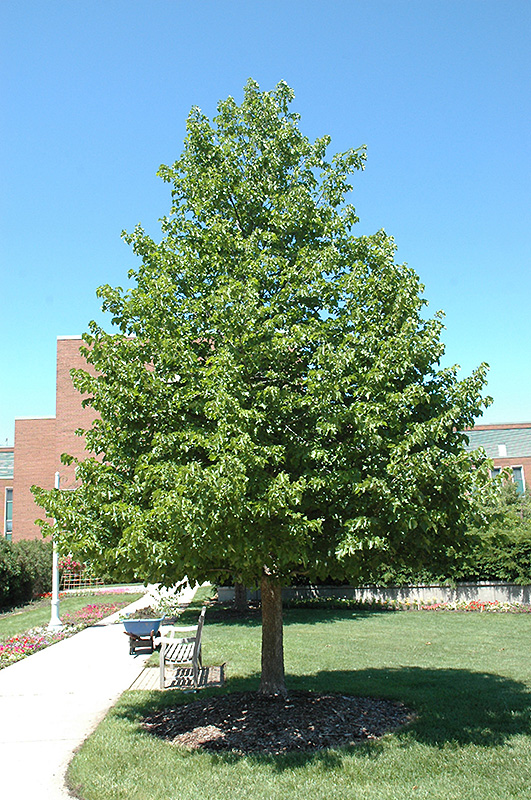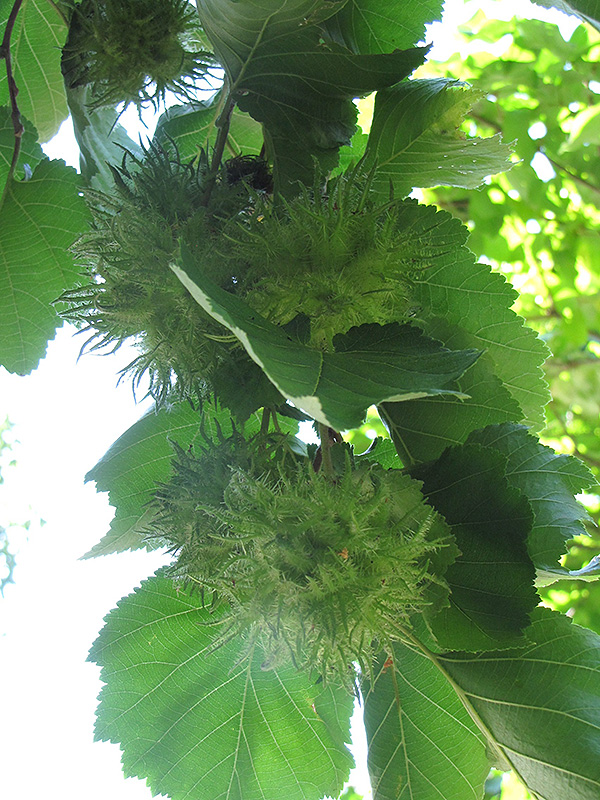* This is a "special order" plant - contact store for details
Height: 45 feet
Spread: 20 feet
Sunlight:
![]()
Hardiness Zone: 4b
Other Names: Turkish Filbert, Turkish Hazel
Description:
A stately small tree with a formal pyramid shape, low maintenance, an excellent choice for home landscapes or boulevards; no one overwhelming ornamental feature but overall an excellent tree for landscape use
Ornamental Features
Turkish Hazelnut is primarily valued in the landscape for its distinctively pyramidal habit of growth. It has dark green deciduous foliage. The crinkled round leaves turn yellow in fall.
Landscape Attributes
Turkish Hazelnut is a deciduous tree with a distinctive and refined pyramidal form. Its average texture blends into the landscape, but can be balanced by one or two finer or coarser trees or shrubs for an effective composition.
This is a relatively low maintenance tree, and is best pruned in late winter once the threat of extreme cold has passed. It is a good choice for attracting squirrels to your yard. It has no significant negative characteristics.
Turkish Hazelnut is recommended for the following landscape applications;
- Shade
- Vertical Accent
Planting & Growing
Turkish Hazelnut will grow to be about 45 feet tall at maturity, with a spread of 20 feet. It has a low canopy with a typical clearance of 4 feet from the ground, and should not be planted underneath power lines. It grows at a medium rate, and under ideal conditions can be expected to live for 70 years or more.
This tree should only be grown in full sunlight. It is very adaptable to both dry and moist locations, and should do just fine under average home landscape conditions. It is considered to be drought-tolerant, and thus makes an ideal choice for xeriscaping or the moisture-conserving landscape. It is not particular as to soil type or pH. It is highly tolerant of urban pollution and will even thrive in inner city environments. This species is not originally from North America.
* This is a "special order" plant - contact store for details








